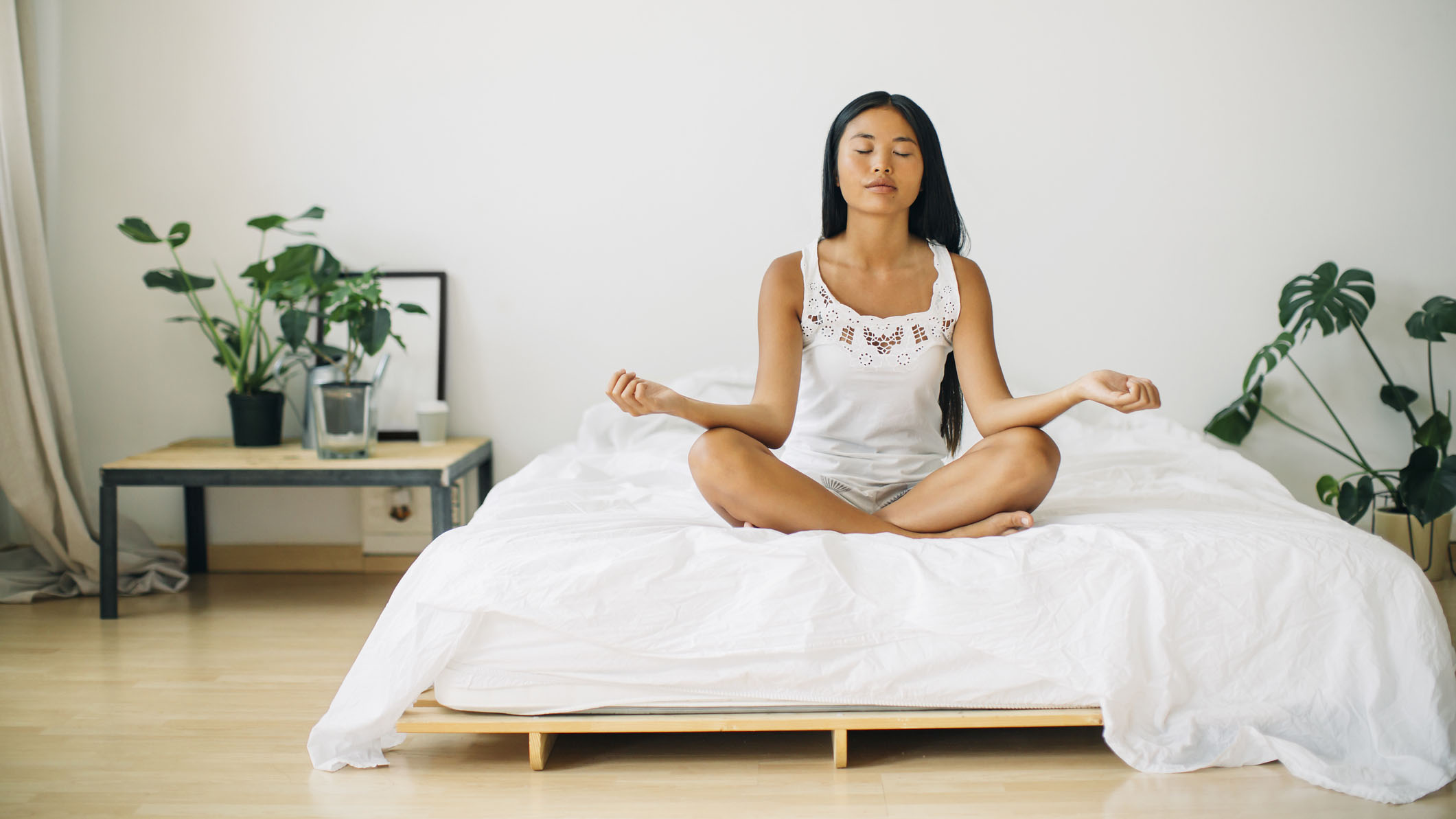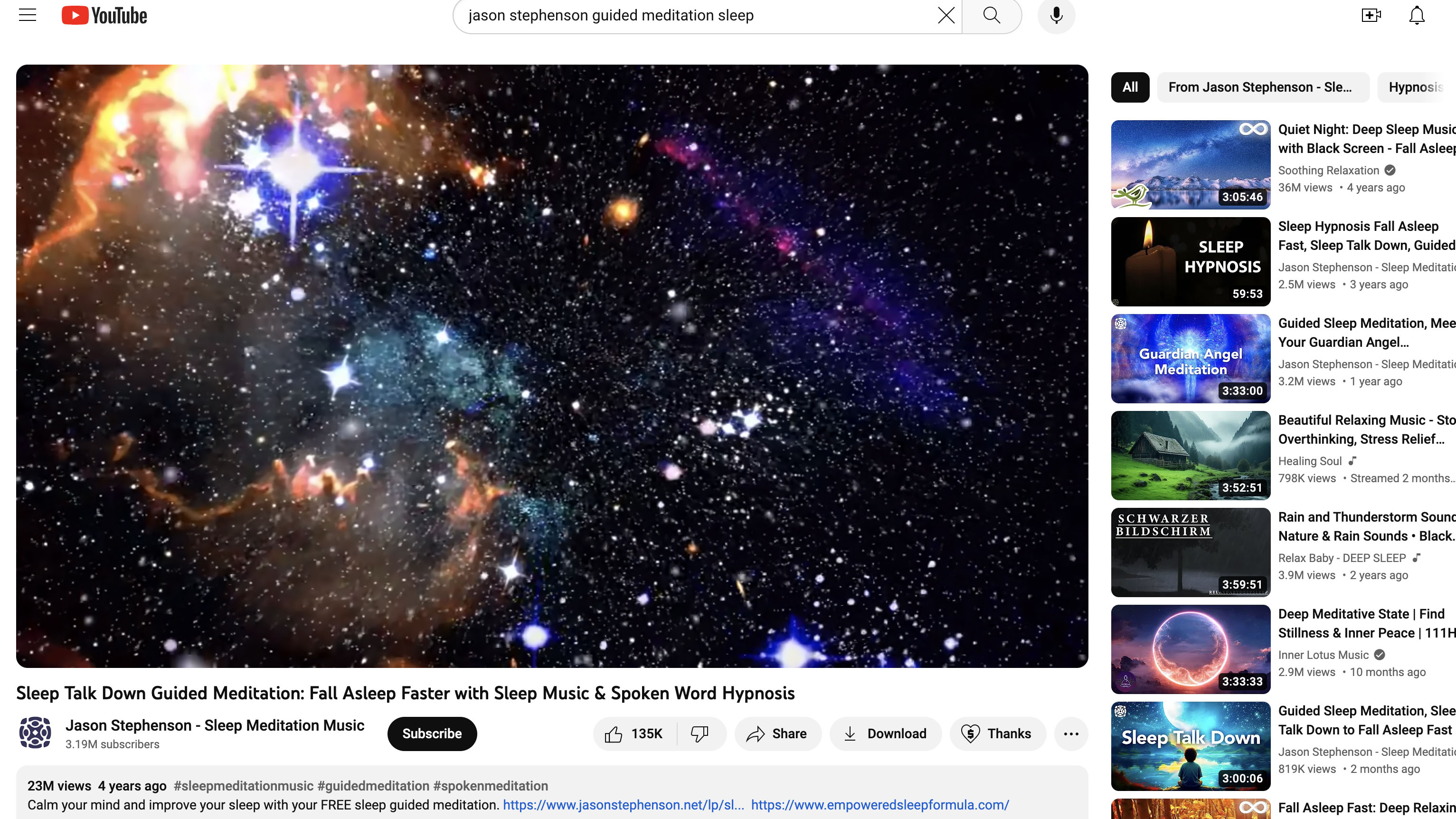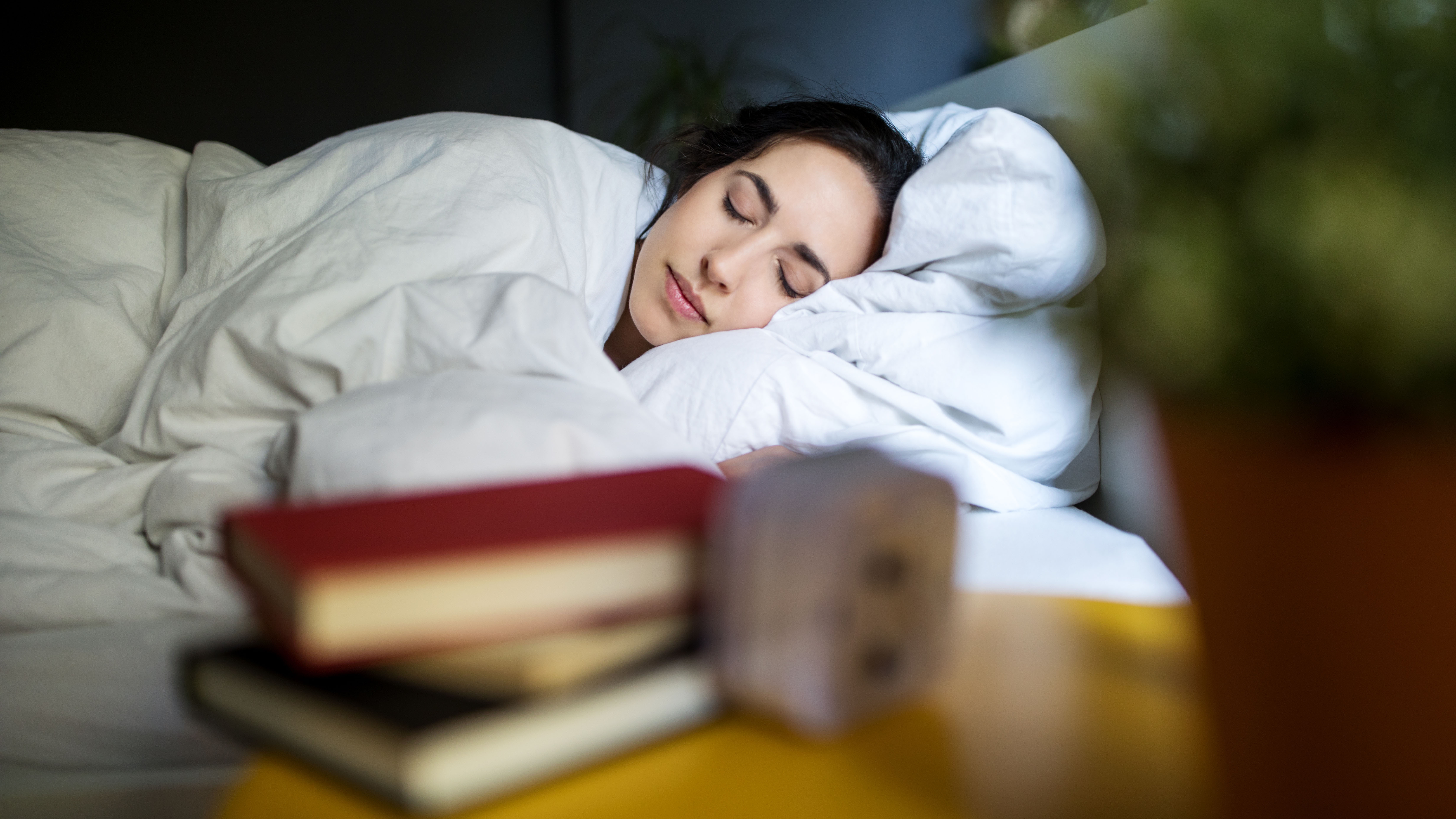
As a sleep writer, I spend a lot of my time researching and testing different ways to sleep better. But even when sleeping on some of the best mattresses in the world for my job, even I'm not spared from the odd restless, sleepless night. From the Sunday Scaries to revenge bedtime procrastination, there are evenings when I can’t drift off no matter how hard I try.
Guided sleep meditations teach you how to relax your mind and body for better sleep. They also help you let go of anxious or stressful thoughts that could otherwise stop you falling asleep. Guided sleep mediations are available for free on YouTube and Spotify, and via specialist apps such as Headspace and Calm.
One method I hadn’t tried was a guided sleep meditation to help relax my mind and body before sleep. As they’re accessible and teach you how to naturally alleviate insomnia, guided sleep meditation videos are becoming more popular.
You can find lots of them online for free, and perhaps the most famous of all is on YouTube: the Sleep Talk Down Guided Meditation by Jason Stephenson, a certified meditation teacher.
This 60-minute meditation is soundtracked with gentle music while Stephenson instructs you on how to relax your body and let go of stressful thoughts; a process he describes as ‘Spoken Word Hypnosis’.
Since it was upload to YouTube almost five years ago, Stephenson's guided sleep meditation has racked up over 23 million views and many positive user reviews. I was curious, would it help me fall asleep fast too? I spent the last seven nights listening to it to find out. Here's what happened...
How to use Jason Stephenson's guided sleep meditation
Jason Stephenson has shared his Sleep Talk Down guided sleep meditation for free on YouTube. I recommend completing your bedtime routine before firing up this video, as otherwise you'll be too tired (or hopefully fast asleep) to then brush your teeth and get dressed for bed.
Use some earbuds or other comfy sleep headphones to listen to the meditation if you share a bed and don't want to disturb your partner. Or, listen to it aloud together if you both want to see if it helps you fall asleep faster.
Night 1: getting used to guided sleep meditation
As I don’t live alone, I decided to play the video on my phone through wireless earbuds rather than play it out loud. Although some people may prefer to play it aloud, I felt earbuds would be considerate to others and effectively block out any outside noises so I could focus only on the guidance.
When I began the video, I quickly learned that I didn’t have to watch anything (so no blue light) and I only had to focus on the sound. The video starts with tranquil (almost sad) music. When the soothing voice began to welcome me to the guided meditation, it did feel a little bit surreal at first, but I was surprised how quickly I got used to it.
The first four minutes of the video is sort of a welcoming, mood-setting introduction, where the voice thanks me for being there, tells me who the video is for and explains how it will help me release anxious, stressful thoughts. It also advises me to close my eyes, lie down, and make the room my own private sanctuary. As I was sitting up and staring at the screen at the time of that instruction, I had to pause the video to turn off the lights, tuck myself in, and put a sleep mask on.

A common topic the guide keeps circling back to is my thoughts. It tells me that it’s okay to get distracted by an anxious thought from time to time – as long as I re-focus on his voice and tend to the thought the following morning. Every time, however, he told me to forget about my responsibilities, it caused me to think about them even more. Did I remember to do this? Did I remember to do that?
At the four-minute mark, the guided meditation begins with a simple breathing exercise, before it moves on to my posture. As the guide instructs me to unscrew my face and spread my fingers, I start to realise how tense my body language is. The video is definitely for back sleepers (it tells me to “drop my shoulders”, which is pretty impossible if I’m sleeping on my side as I usually do).
The voice closes the “spoken word hypnosis” by reminding me that I am part of a beautiful cosmos and that we are not alone. At the 30-minute mark, the spoken word stops and the rest of the video is just the music. Not at all sleepy, I turn the video off and go back to my side-sleeping position.
Nights 2-4: I'm relaxing better before bed
On the second night, I was more prepared. I created a more relaxing atmosphere (I find tidying up before bed helps to make the space more calming) by turning off the lights and lying down before the video starts.
As I knew what to expect, the video became more familiar and therefore more relaxing. I still couldn’t help thinking about my responsibilities and worries everytime he told me not to. He tells me to let the thought “float away”, but I knew if I let the thought float away, I would forget it by morning. So, on the third night I wrote a little to-do list of worries and tasks I needed to complete before the video started, which helped me to release any stress or worry and concentrate on the guide.
By the fourth night, I couldn’t remember his closing words about never being part of the cosmos, so I took it as a good sign that I drifted off before the video ended.
Nights 5-7: I'm falling asleep much faster now
The fifth night was a little different. I went to bed earlier than usual because I needed to wake up at 5am ready for a two-hour commute. I struggle to sleep if there’s pressure on me to get up extra early, so I was hoping this would relax me and help me get out of bed on time.

While I made it to the end of the video without falling asleep, I found the video did set me up for bed, and I woke up an hour earlier than my alarm time.
By the sixth and seventh nights, I felt like I knew the video inside and out, so I skipped the four-minute introduction. As I knew the video so well, listening to the guidance felt as if I were listening to a boring lecture or a relative repeating one of their old stories. But this dullness must have helped as I wound up falling asleep before the video ended on both nights.
How do guided sleep meditations work?
Guided sleep meditation relaxes the listener by having a sleep practitioner or teacher lead the meditation. According to Calm, the teacher relaxes and prepares the listener for bedtime by instructing them to follow some simple steps: notice your breathing, notice your bodily sensations, allow thoughts to come and go, and then return to focusing on breathing
According to Headspace, these guided meditation steps allow us to become more aware of the here and now, which in turn allows us to forget about the day we’ve had and the responsibilities to come. Other benefits, says Headspace.com, include lowering the heart rate and encouraging slow breathing, which can improve sleep quality.
How sleep meditations help you fall asleep faster
Similarly to body scan meditation, guided sleep meditation videos are accessible and calm the mind and body quickly. It will take you longer to fall asleep if you’re stressed or wired, and you may wake up repeatedly during the night, too.
During bedtime, our thoughts and worries kick into overdrive. It’s quiet, you're alone with your thoughts, and sometimes it’s easy to get distracted during silent meditation. Guided meditation, meanwhile, has a voice and instructions to drown out the silence.
While it can take a while for people to settle down and forget their troubles, guided sleep meditation accelerates the process as it immediately gives you something else to focus on.







